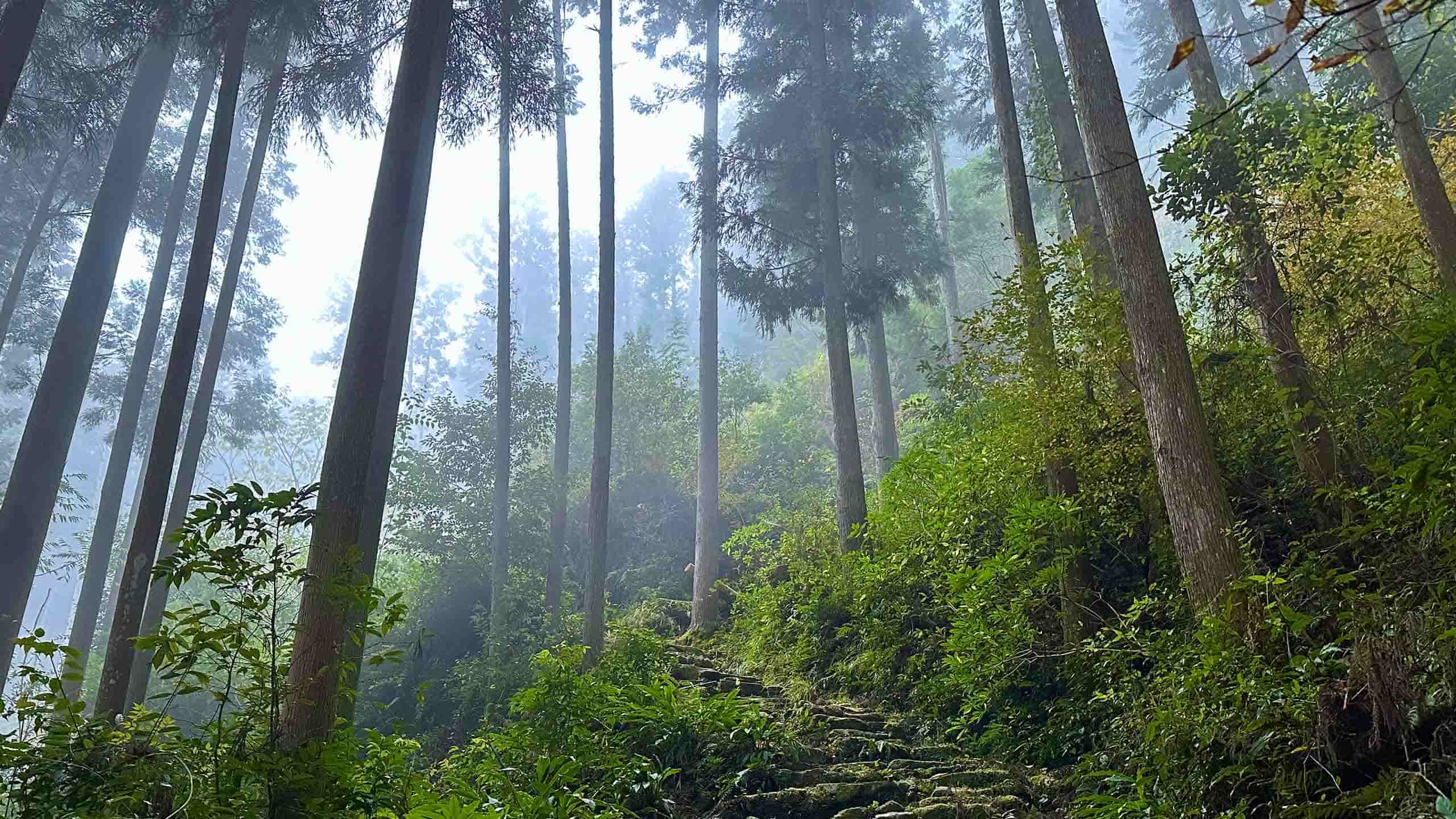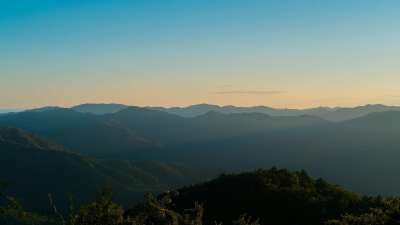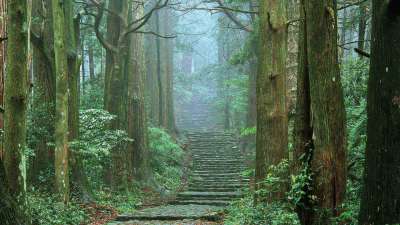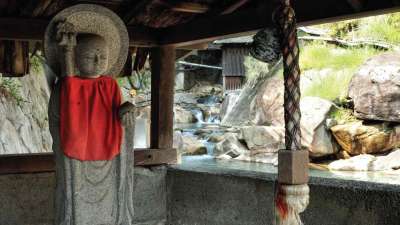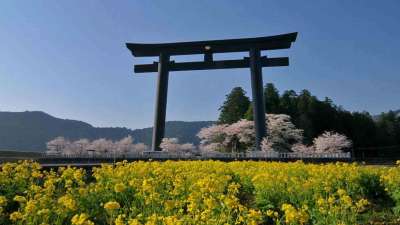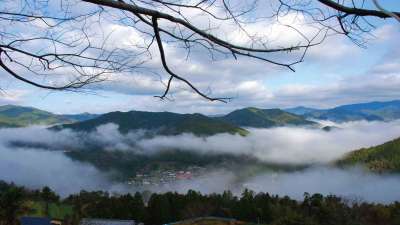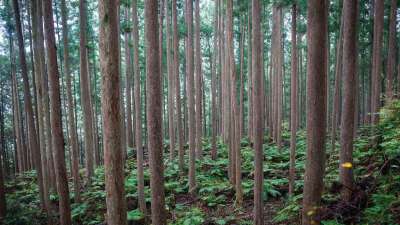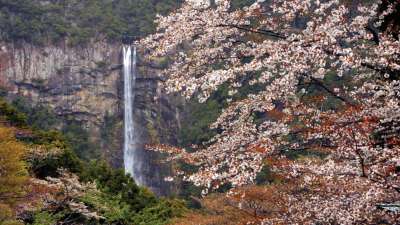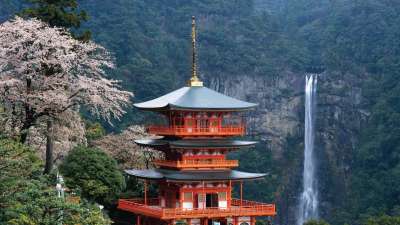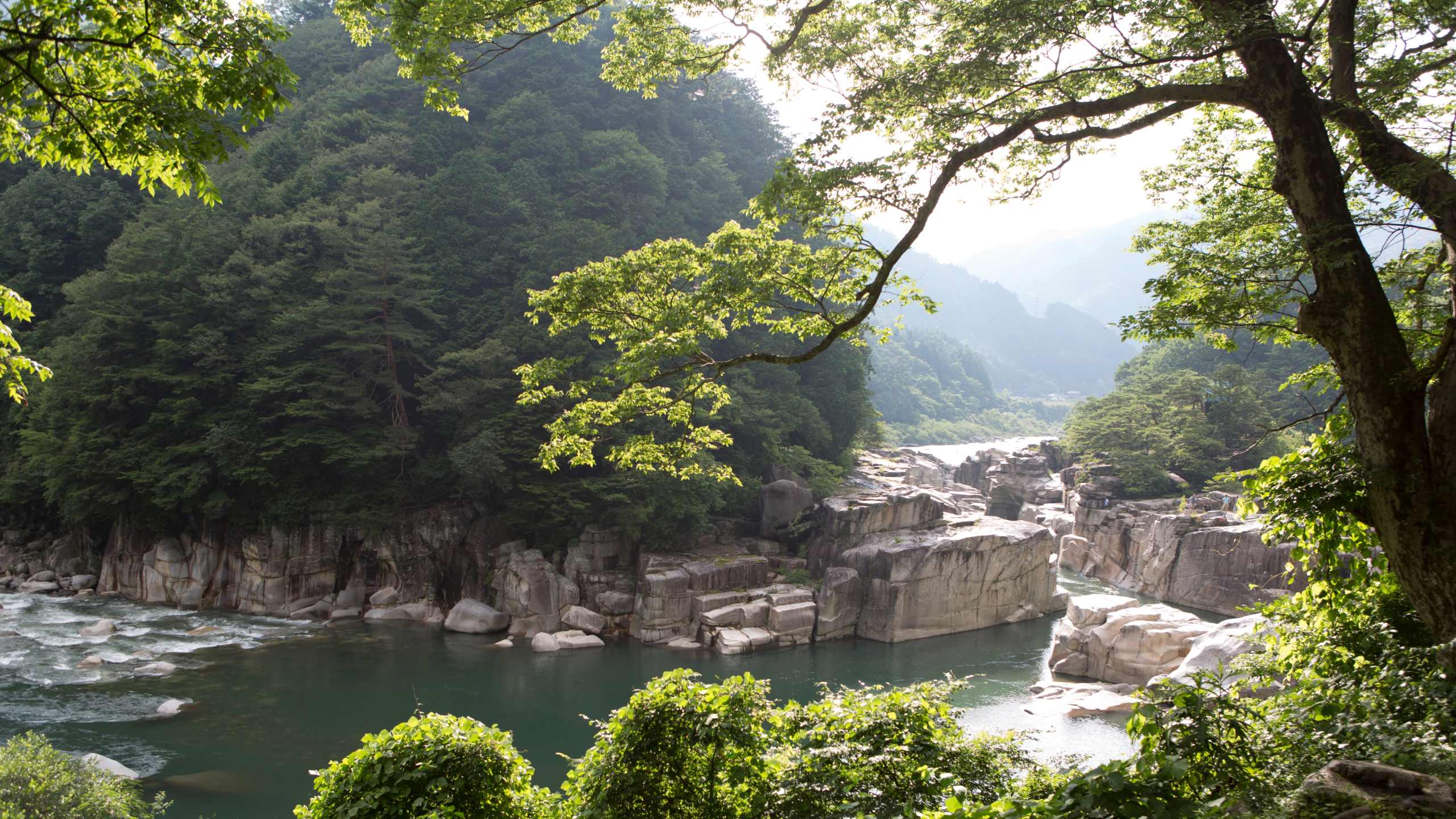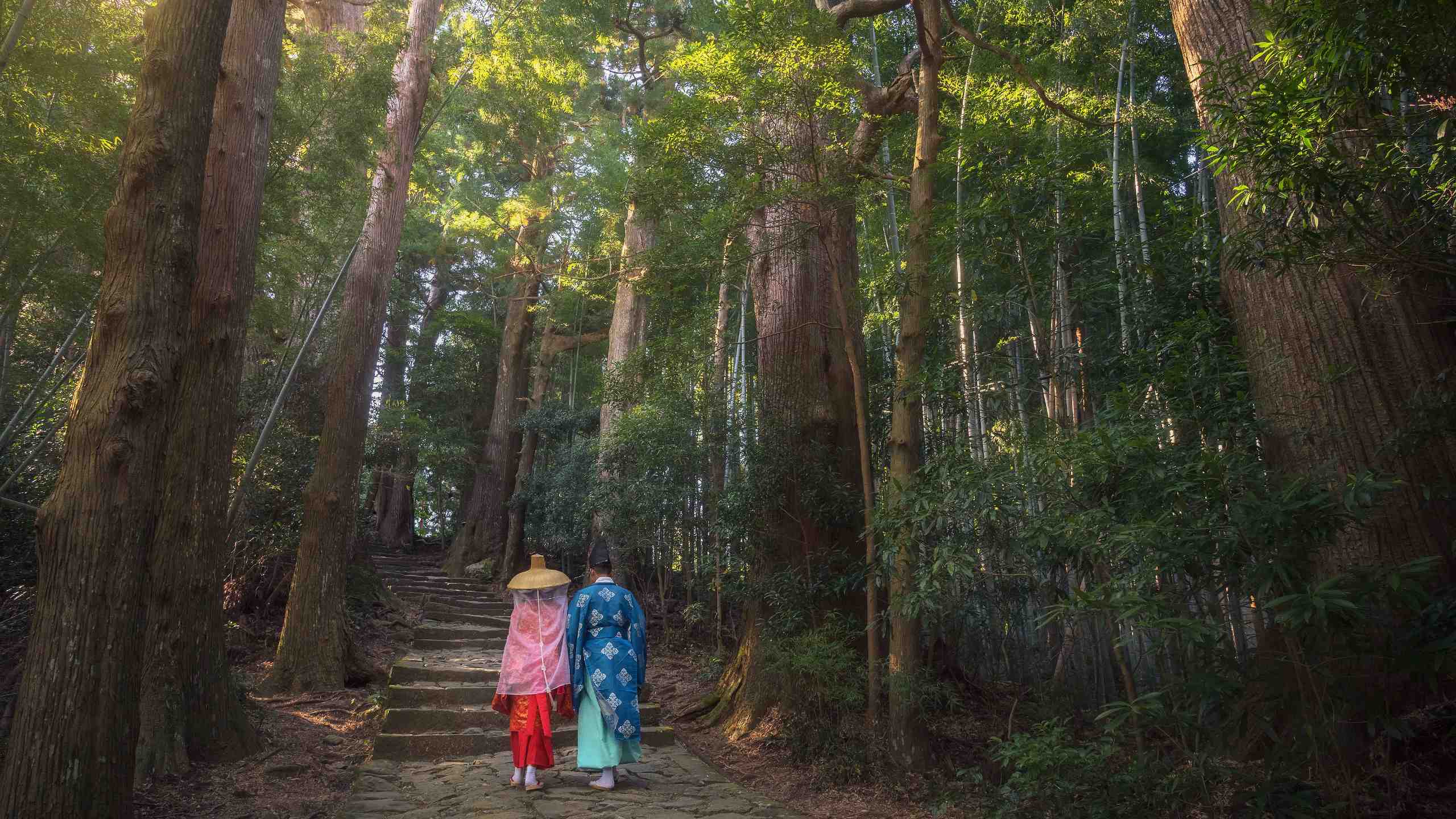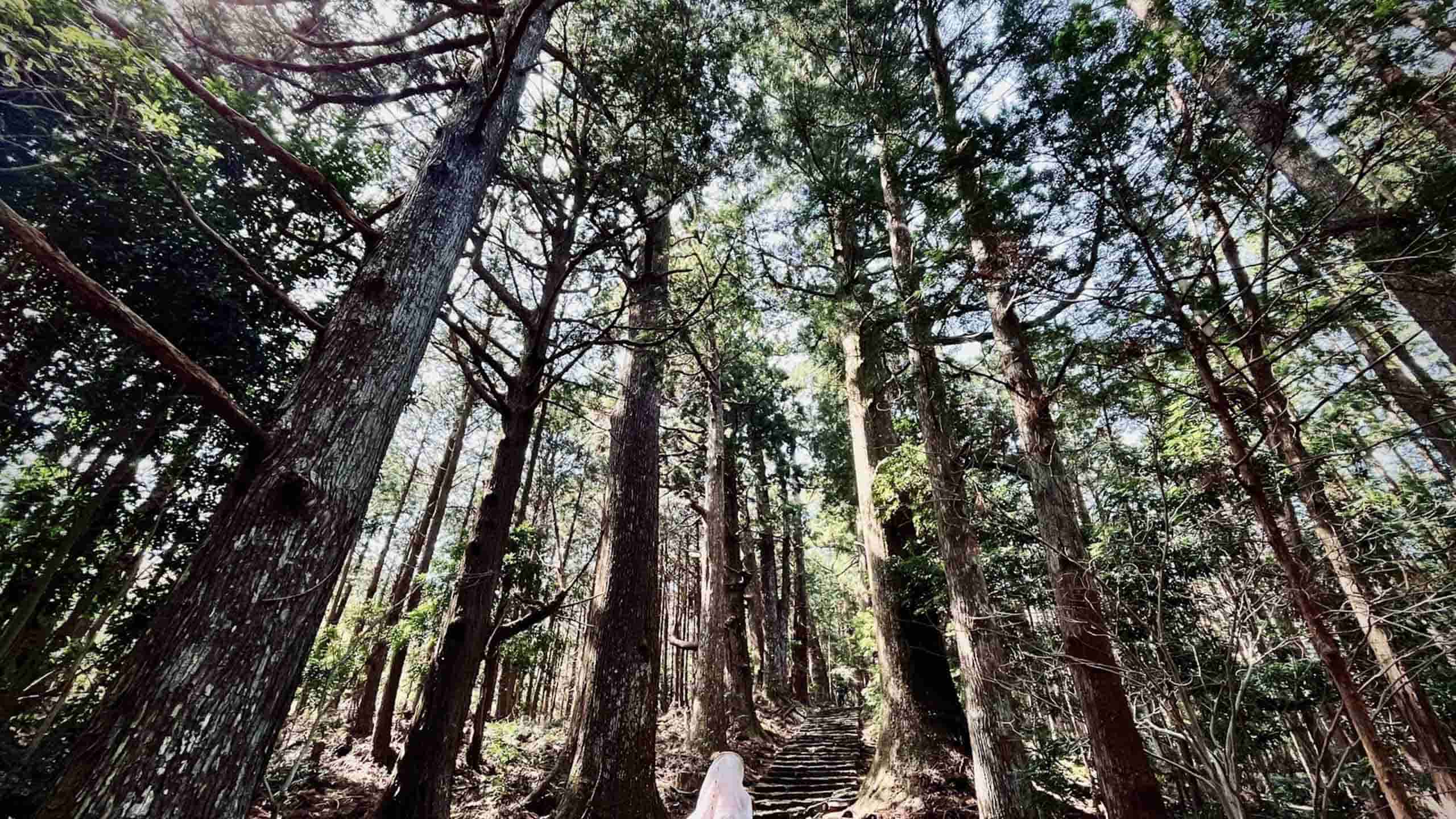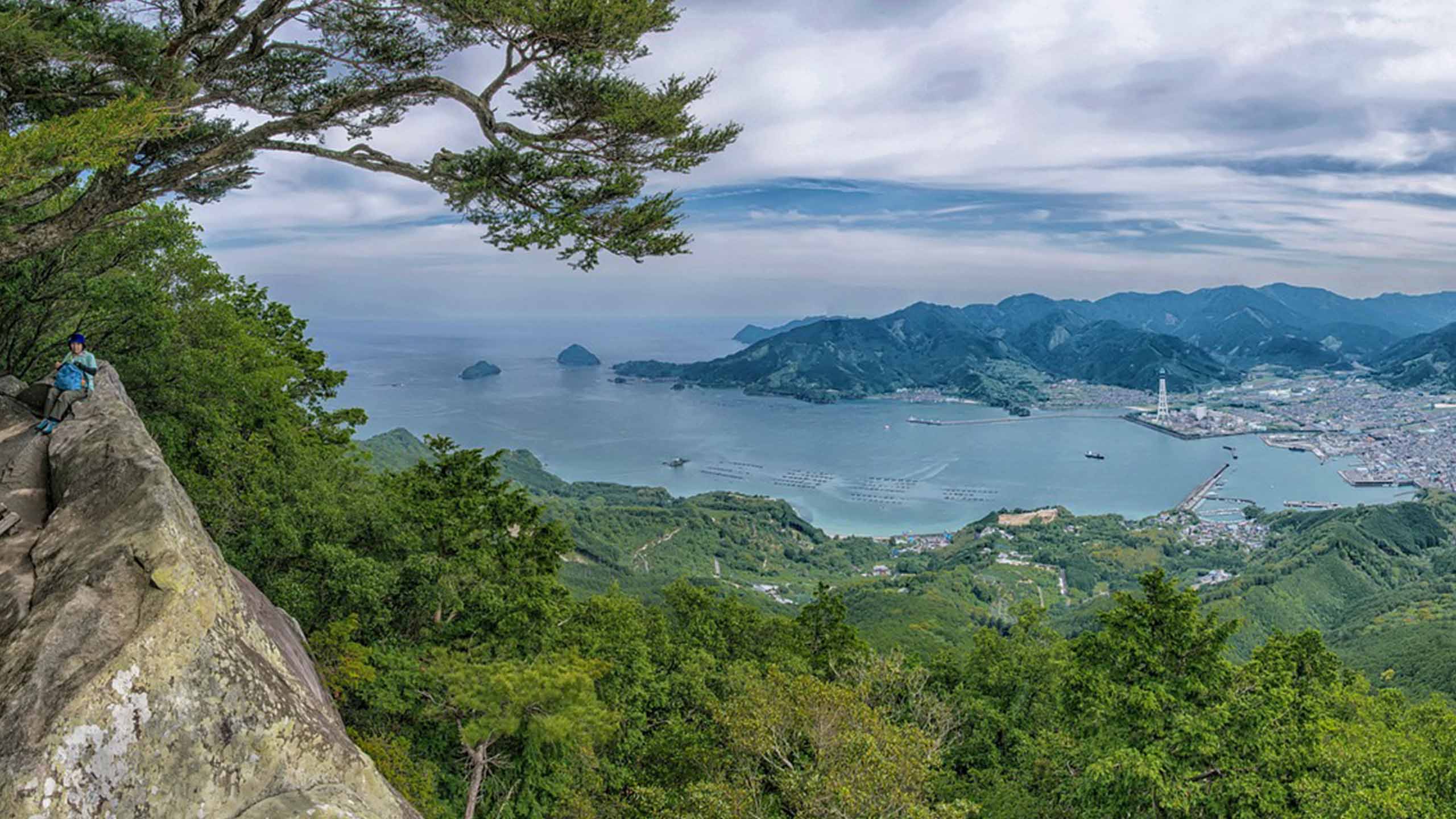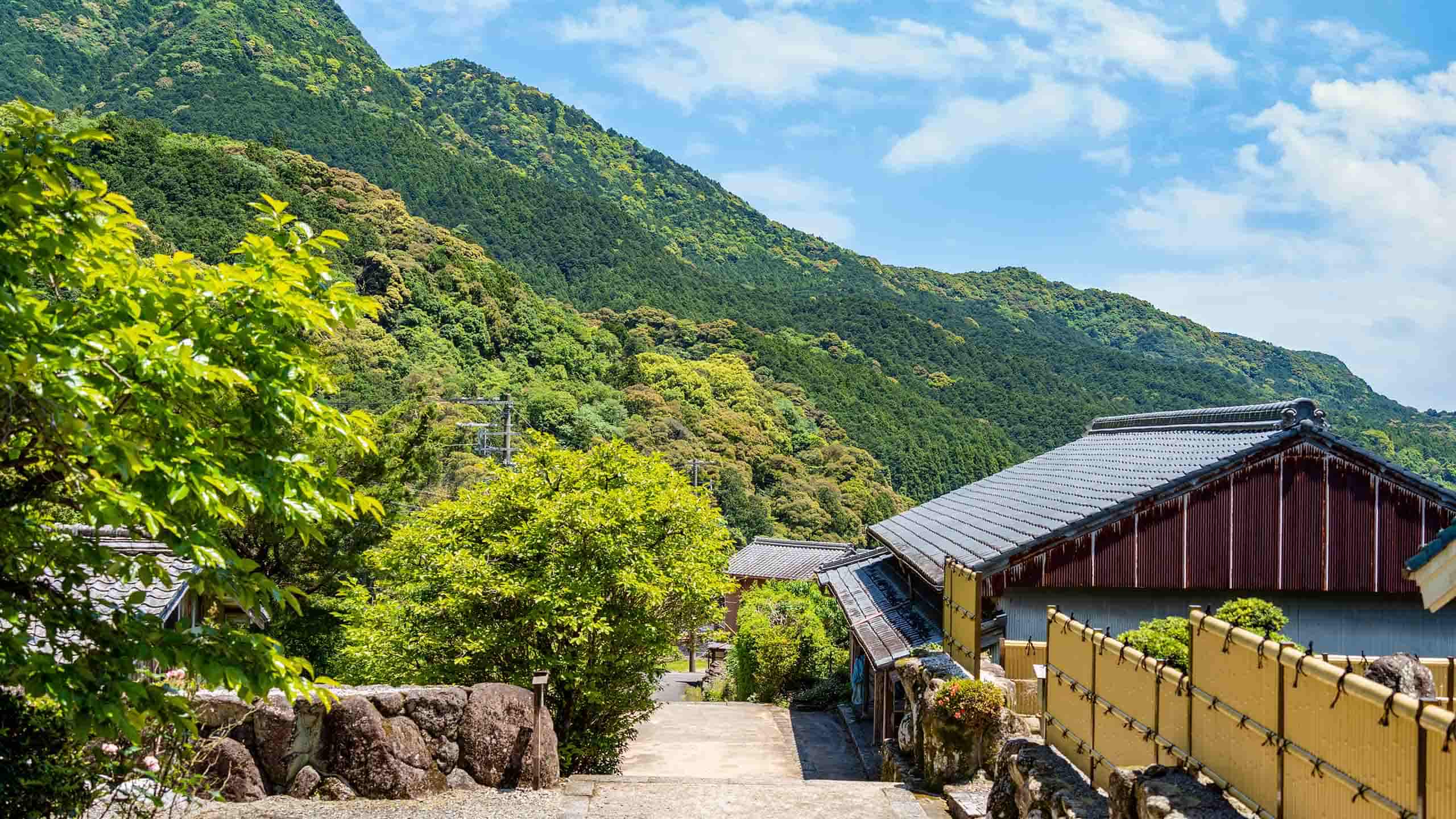Along the Kumano Kodo Iseji, Japan’s countryside scenery unfolds like a digital wallpaper, highlighting waterfalls, mountain peaks, rushing streams, and flourishing forests. Many spectacular landmarks dot the route, notably the Kumano Nachi Taisha, one of the three shrines of the esteemed Kumano Sanzan. This shrine is particularly stunning, distinguished by the charming Nachi-no-Taki Waterfalls – the shrine’s deity and source.
With so much beauty, culture, and religion to experience, here are the best sections of the Kumano Kodo Iseji Route. If you are planning a Kumano Kodo walking holiday you might like to read Kumano Kodo The Nakahechi Route and The Kumano Kodo Iseji Route: A Journey Through Sacred Japan to discover more on which route appeals to you most.
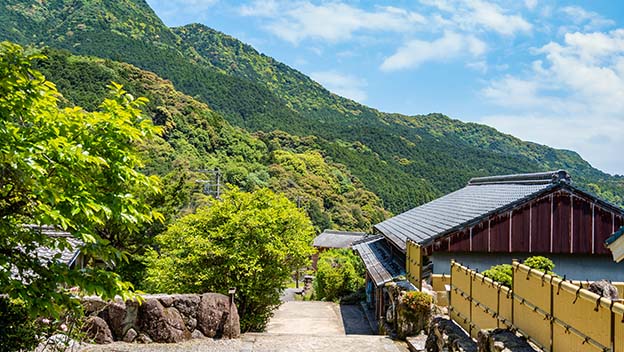
Photo credit: Simeon Pitukolo
Magose-Toge Pass
The Magose-Toge Pass begins from Michi-no-Eki Miyama Rest Station to Owase Station, encompassing a distance of 5.2 km, which takes approximately 2 hours and 45 minutes to complete. From the Miyama Rest Station, the first significant attraction in this section is the Guardian Statue for crying children. The statue was initially constructed for pilgrims to pray about their journey but was later changed to a site where you pray when your child cries at night. Next is the stone bridge over a swift rushing stream, a perfect stop to take photos of the scenery. The most visually enthralling and, perhaps, most important part of this section is the Magose Viewpoint, offering panoramic views of the mountains and green scenery, including cherry blossoms from spring to summer.
Hajikami-toge Pass
The Hajikami-toge Pass is the border between Kihoku-cho Nagashima and Miyama and is about 3.5 km long. Pilgrims can either take the Edo or Meiji route; both meet at the pass, and the section takes about 1 hour and 50 minutes to complete. The Edo route is more difficult than the Meiji option but rewards you with striking views of the Kii Matsushima islands, which seem to be floating in the Kumano Sea. Regardless, the Edo route still leads to the pass, about 147 metres high, and offers views of the coastline and sea. There are benches at the pass to savour the views and relax a little before descending.
Hadasu-no-Michi Pass Route
This route extends for approximately 4km and takes around 1 hour and 30 minutes to complete, but it holds plenty of myths, wonders, and rich history. It starts from Atashika Station and ends in Hadasu Station, as pilgrims tread on the oldest paving stones on the Iseji Route – the Kamakura period (1185 – 1333) stone path. Along the route, you will meet the Jofuku Shrine, in honour of Jofuku, emperor Qin's doctor who came from China 2200 years ago, seeking the elixir of life, and brought Chinese civilization ideas with him. Also, the acclaimed Buddhist monk Kobodaishi was believed to have passed this route and left his footprint on a stone, which magically began gushing holy water that can cure any sickness. The footprint still exists to date and is a spectacle on the path.
Tsuzurato-toge Pass
The Tsuruzo-toge Pass section begins from Umegadani Station and ends at Kii-Nagashima Station, stretching approximately 9.5 km. It takes around 4 hours to complete, making it one of the longest in the Iseji route. One of its highlights is the mini Saigoku Kannon Pilgrimage Statues of 33 Buddhist temples worshipping deities of mercy created by the dethroned emperor Kazan. Next is the pass itself at 357 metres, offering pilgrims the first gorgeous sights of the Kumano Sea on their way to the three shrines of Kumano. The paths are also worth noting, as they are made of switchbacks, but the stonework on them makes the trek easier and worthwhile.
Yakiyama-Toge Pass
Yakiyama-Toge Pass is the most physically challenging section of the Iseji Route, requiring the assistance of an expert mountain guide. However, it spoils pilgrims with enchanting ocean views at its peak, alongside a couple of sacred sites. The section begins from Mie Prefecture Kumano-Kodo Center to Mikisato Station, taking approximately 5 hours to complete its 10.1 km stretch. The first attraction in this section is the Pilgrim Gravestones, which honour pilgrims who died on the trail. Nanamagari slope is next and is remarkable for being the steepest and trickiest slope in this section, with seemingly endless stones ascending the mountains. It is followed by Kojindo, a famous site that contains the grave of a mountain priest who drove bandits notorious on the route for robbing pilgrims. Finally, there’s an arbour at the scenic viewpoint overlooking the ocean where pilgrims can enjoy lunch in a shed.
Matsumoto-Toge Pass
The Matsumoto-Toge section begins from Odomari Station and ends at Kumano-Shi Station, and it takes pilgrims 1 hour and 45 minutes to complete its approximately 4.1km length. The first noticeable feature of the section is the guardian statue at the entrance of the pass, with a bullet hole created when a hunter mistook it for a ghost and shot at it. You’ll also enjoy dazzling views of the Kii Mountain Range while walking on stone paths created during the Edo and Meiji eras. Fishermen constructed the Meiji-era stone path as a punishment for fighting over fishing territories in 1868. More scenic views of Mihama Beach await from a viewpoint overlooking the beachy coast as it stretches to Shingu, with views of the Shingu Hayatama Taisha Shrine, one of the Kumano Sanzan shrines.
Kumano Streets
This section has no distance and approximate hours to spend because it is an immersion into the streets of Kumano to explore. First on the highlights is Onigajo (Demon’s Castle), famed for its picturesque elegance in a dramatic rock formation stretching for 1 km. Next is Hananoiwaya, a 45-metre-tall rock and dwelling/burial place of Izanami, a goddess who gave birth to many Japanese deities. There is another 25-metre-high rock known as Shishi-Iwa by the beach, one of the Kumano Oma shrine guardians. The Onigajo and Shishi-Iwa are designated National Natural Treasures, forming part of the Unesco World Heritage Sites of the Kii-Mountain Range alongside Hananoiwaya. In addition, there is a cultural centre to relax and recharge, with the interiors of a traditional Japanese house, while Ubuta Shrine is where the goddess Izanami birthed all her children.
Unique Sections, Diverse Sights, and Experiences on the Iseji Route
Explore the Kumano Kodo Iseji Route, where each section is unique in sights, sounds, and sensations. From mountain passes overlooking postcard-perfect beaches and coastlines to waterfalls and luxuriant forests serving as backdrops for shrines, jaw-dropping moments are endless. Be ready to bask in nature’s stark beauty as you experience a remarkable spiritual odyssey walking ancient stone-paved paths just like pilgrims did centuries ago.
Discover Kumano Kodo Holidays Here
